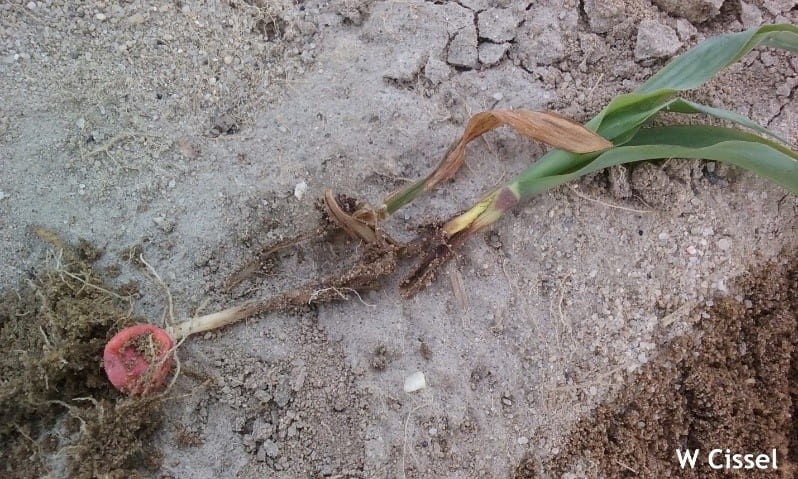Bill Cissel, Extension Agent – Integrated Pest Management; bcissel@udel.edu
Congratulations to Kyle Serman for identifying the insect and damage as seedcorn maggot and for being selected to be entered into the end of season raffle for $100 not once but five times. Everyone else who guessed correctly will also have their name entered into the raffle. Kyle will also receive a FREE copy of A Farmer’s Guide to Corn Diseases. Click on the Guess the Pest logo below to participate in this week’s Guess the Pest! For Guess the Pest # 6, we will also be giving away A Farmer’s Guide To Corn Diseases ($29.95 value) to one lucky participant.

http://www.plantmanagementnetwork.org/book/cornfarmersguide/
Guess the Pest # 5 Answer: Seedcorn Maggot



The photographs included in Guess the Pest # 5 are from an untreated check in one of my research plots evaluating labeled and experimental seed treatments. I did everything “wrong” to increase the likelihood of having seedcorn maggot damage. That is, I plowed under a cover crop (green manure), spread manure, planted early, and spread bone and meat meal over the rows (not something I recommend doing at home or on your fields). Seed corn maggots (SCM) are about 3/16 of an inch in length, legless, and yellowish-white in color. Their body is tapered and they lack a head capsule but have a pair of small, black mouth hooks. Typically, they will feed on the seed and often tunnel into the stem of the plant. In other cases, they will bore directly into the stem of the plant below the soil surface, as was the case in many of the plants damaged in my plots this year.
Seedcorn maggots are not only a pest of field corn but can also attack soybeans, cole crops, peas, melons, sweet corn, and spinach. We tend to have more problems from SCM in cool, wet springs with delayed germination following a warm winter because adult flies become active earlier and for a longer period of time. Fields that favor egg laying are at greater risk for SCM injury. These include fields with heavy crop residue and/or manure applications, high organic matter, and freshly plowed fields. SCM feeding damage often kills the seedling by destroying the germ, resulting in stand reductions. In severe cases, replanting may be required.
There are no rescue treatments for SCM and in this case, “an ounce of prevention is worth a pound of cure”. Chemical control options include soil insecticides and commercially applied seed treatments. However, not all options are available among all crops so be sure to refer to the label before making an insecticide application.
Here is a link to our Field Corn Insect Management Recommendations with preventative seedcorn maggot chemical control options:
Guess the Pest? Think you know the answer…. Click on the Guess the Pest Icon below or go to https://goo.gl/forms/pWjHQUpmjABFB0v32 to submit your best guess.


